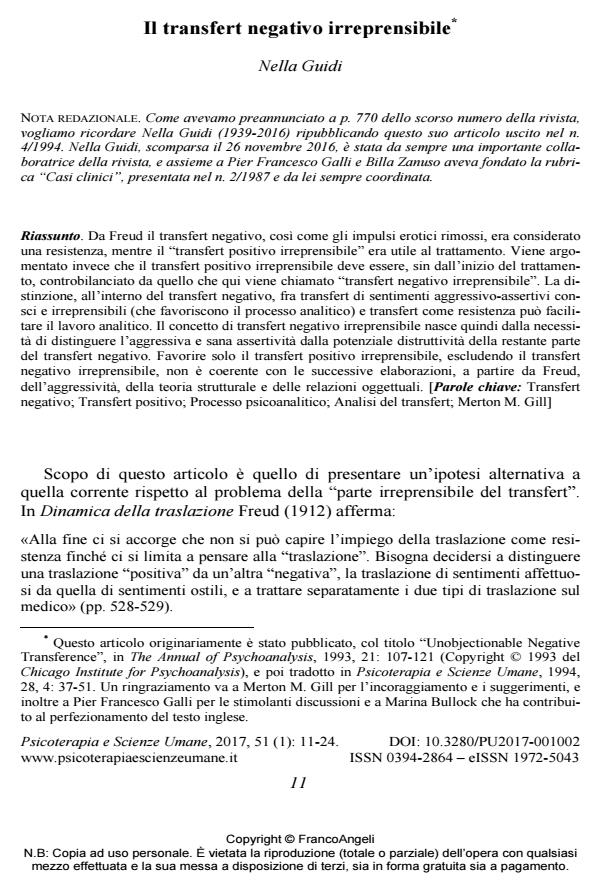Il transfert negativo irreprensibile
Titolo Rivista PSICOTERAPIA E SCIENZE UMANE
Autori/Curatori Nella Guidi
Anno di pubblicazione 2017 Fascicolo 2017/1
Lingua Italiano Numero pagine 14 P. 11-24 Dimensione file 66 KB
DOI 10.3280/PU2017-001002
Il DOI è il codice a barre della proprietà intellettuale: per saperne di più
clicca qui
Qui sotto puoi vedere in anteprima la prima pagina di questo articolo.
Se questo articolo ti interessa, lo puoi acquistare (e scaricare in formato pdf) seguendo le facili indicazioni per acquistare il download credit. Acquista Download Credits per scaricare questo Articolo in formato PDF

FrancoAngeli è membro della Publishers International Linking Association, Inc (PILA)associazione indipendente e non profit per facilitare (attraverso i servizi tecnologici implementati da CrossRef.org) l’accesso degli studiosi ai contenuti digitali nelle pubblicazioni professionali e scientifiche
Da Freud il transfert negativo, così come gli impulsi erotici rimossi, era considerato una resistenza, mentre il “transfert positivo irreprensibile” era utile al trattamento. Viene argomentato invece che il transfert positivo irreprensibile deve essere, sin dall’inizio del trattamento, controbilanciato da quello che qui viene chiamato “transfert negativo irreprensibile”. La distinzione, all’interno del transfert negativo, fra transfert di sentimenti aggressivo-assertivi consci e irreprensibili (che favoriscono il processo analitico) e transfert come resistenza può facilitare il lavoro analitico. Il concetto di transfert negativo irreprensibile nasce quindi dalla necessità di distinguere l’aggressiva e sana assertività dalla potenziale distruttività della restante parte del transfert negativo. Favorire solo il transfert positivo irreprensibile, escludendo il transfert negativo irreprensibile, non è coerente con le successive elaborazioni, a partire da Freud, dell’aggressività, della teoria strutturale e delle relazioni oggettuali.
Parole chiave:Transfert negativo; Transfert positivo; Processo psicoanalitico; Analisi del transfert; Merton M. Gill
Nella Guidi, Il transfert negativo irreprensibile in "PSICOTERAPIA E SCIENZE UMANE" 1/2017, pp 11-24, DOI: 10.3280/PU2017-001002